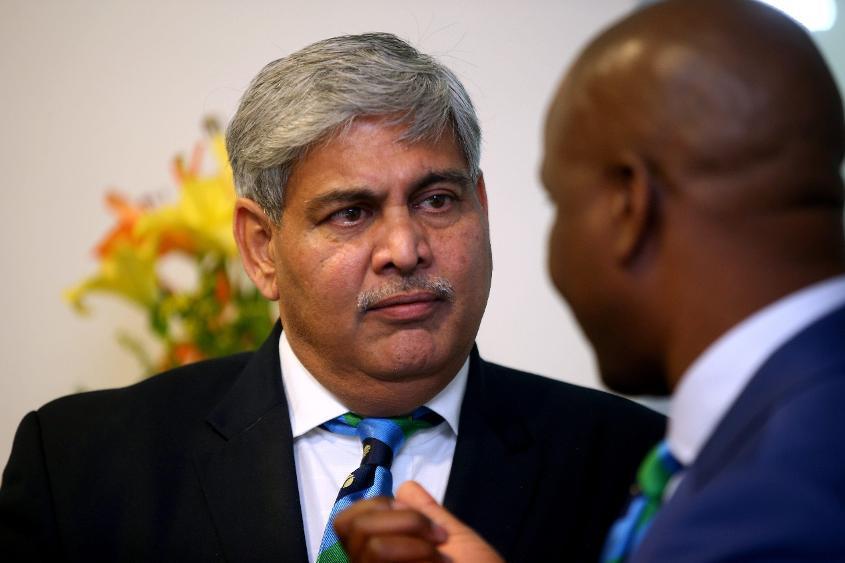With various discussion online about the World Cup format and whether changing the structure would affect the value of the event ergo the money flowing into cricket’s development, I’ve republished this from my blog on the ICC global funding model. It was was the first of a series of FAQ-style posts about the underlying structures of cricket’s funding, development, strategies, and other pieces that are useful in understanding what goes on behind the sport’s curtain.
A brief look at how global cricket is funded by the ICC (and where the money comes from)
The vast majority of cricket funding (outside the major nations’ own arrangements) comes from monies distributed by the ICC. Almost US$1.8bn will be distributed over this current rights period (2015-23) to over a hundred member federations.
The majority of ICC funds are gained from their “global events” which include the Men’s & Women’s 50 over Cricket World Cups (CWC) and World Twenty20s (WT20). The Champions Trophy 2017 & 2021 was also included, but the 2021 event has now been replaced by a Men’s T20 World Cup.
In the majority, these funds come from two particular streams:
- Media (TV & digital) Rights. Star Sports* (through their Indian/Middle East operations) bought the worldwide 2015-23 rights for around two billion dollars. ICC approved broadcasters will then carry these events in their regions after paying a fee to Star; e.g. Sky (UK), Super Sport (Sub-Saharan Africa), Channel 9/ Fox Sports (Aus) etc. *Interestingly Star was sold to Disney by owners Fox as part of a massive deal. How does the value of these rights compare the deals signs some of the bigger cricket nations? I’ll re-post that FAQ on that soon.
- Sponsorship Properties. There is ~$700m in the ICC budget for the 2015-23 period. This includes everything from naming to major alignments such as trophy naming rights and other headline deals (they do not sell naming rights to world events any more – if we think back to the “Wills World Cup” days in 1996 etc). Major names aligned to ICC events during this period include GoDaddy, Booking.com, Bira91, Uber, Nissan, Emirates, Oppo, Pepsi, Coke, LG, MRF Tyres, Castrol, Reliance, Hyundai, and more..
Other non-event specific sponsorships such as the Umpires (Emirates), and equipment (Gray-Nicolls) are in addition to these global events, but will generally also carry over and into the major tournaments.
The funding distribution model has changed a lot (and numerous times) over the past few years, no more so than as a result of the “Big 3” reforms in 2014, which were more or less repealed in mid-2017 among raft of positive governance overhauls under Chairman, Shashank Manohar (main photo: ICC). The ICC confirmed the current model in early 2018.
Manohar was first appointed Chairman in November 2015, when he was BCCI’s representative. However he resigned as BCCI President in order to take up the position as the ICC’s first independent Chairman in May 2016.
So, how much does each member receive?
Over eight years the breakdown of ICC grants to members are as follows (USD):
- 405m (~51m pa) India
- 139m (~17m pa) England
- 128m (16m pa) Australia, Bangladesh, NZ, Pakistan, South Africa, Sri Lanka, West Indies
- 94m (~12m pa) Zimbabwe
- 40m (~5m pa) Afghanistan & Ireland (became full members 2017 so this may be pro-rata from 2017-23)
- 160m to 93 Associates – this is broken up across two grant systems (tournament & scorecard)^. The complexities of Associate funding deserve their own piece which will follow shortly.
Dutch journalist Bertus De Jong set out the funding model changes in a tweet not long after they were ratified (numbers are not confirmed by ICC):
The new model totals distributions to members of $1.774bn, the rest is for ICC’s administration and cost of running its operations and events.
It must be noted that these totals are based on the current ICC income budgets for 2015-23. These will change if actual numbers (are forecast to) deviate from the budget.







